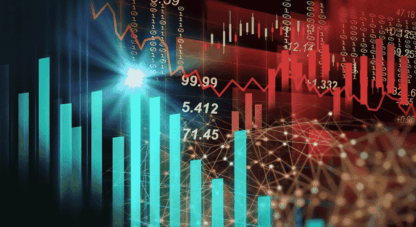2020 Trends in Gold Investing
By David McAlvany, CEO, Vaulted
The precious metals market, specifically gold, brought considerable excitement in 2019. Gold was often in the spotlight – and in the news – more than in prior years as it continued to reach historical highs in a variety of currencies. Gold was up nearly 20 percent for the year.
Gold’s rise could be just as eventful in 2020, if not more so, as many of the trends that drove the gold market in 2019 are set to continue and new ones will emerge that will surely affect the industry.
Noisy election results in economic uncertainty
Obviously, one of these main issues will be the 2020 election. Without getting political here and discussing specific candidates’ merits, or lack thereof, it is safe to say that this campaign may produce a wide range of outcomes for the stock market and economy more broadly. The candidates range from avowed socialists to staunch protectionists, and everywhere in between. The election outcome could bring with it market fluctuations and drive the price of gold even higher. As we saw in 2019 when issues such as the trade war with China and fear of a looming recession drove investors to gold, it and other precious metals thrive as a “safe haven” during times of economic uncertainty and geopolitical unrest.
Central banks fill their vaults
That same uncertainty also caused central banks to buy gold in record numbers, a trend we expect to continue in 2020. During the last year, central banks in total have purchased more than 150 tons of gold. Like individual investors, central banks also take keen note of global uncertainty and unrest, and this has led to many deciding to stockpile precious metals. Fortifying reserve assets with a physical tangible asset is seen as a way to diversify. It safeguards against being too reliant on any one specific currency, and many countries are doing just that.
Another central bank trend driving interest in gold is a move towards negative interest rates. Many different countries are already in the midst of enacting negative interest rates policies. Although this hasn’t happened yet in the United States, it is an idea that President Donald Trump has floated on occasion when discussing monetary policy. Simply put, negative interest rates mean that for the average consumer, their money is doing less for them than ever before. It means they are actually paying banks for the privilege of storing their money for them.
Gold as the new savings account
This has led to many individual consumers and investors to take money that was previously in a savings account and put it towards gold. In a zero or negative interest rate environment, it is the savers that are most adversely affected. Indeed, gold could be seen as the new savings account; or at least a smarter one during this current period of cutting interest rates. It is a safe haven that is not subject to the whims of central bank monetary policy or money manipulation.
A new hope with younger investors?
Finally, we see 2020 as a year where even more younger investors could show interest in owning gold. Millennials and the Gen Z generation are people that like to take a fresh eye at longstanding processes and ask, “Why have we always done it that way, and can it be done better?” It’s that attitude that has spurred many of the fintech innovations over the past decade, such as the robo adviser and P-to-P digital money transfers.
We think these younger generations will take the same approach when it comes to how they invest. They say those that ignore history are doomed to repeat it, but many “traditional” investment advisors and wealth managers are ignoring underlying concerns beneath the current booming market. Perhaps wary of another market meltdown in the future, more younger investors will look to owning gold as a way to diversify a portfolio, reduce overall portfolio volatility, and also significantly increase total returns. As a generation that tends to be socially conscious, they also tend to gravitate towards investments that are more sustainable, such as conflict-free gold. This describes gold that was sourced in an ethical manner; for example, gold that is not tied to an armed conflict, or mined by those working in substandard conditions.
With a fresh outlook, many see gold ownership as either insurance that offsets systemic risk in a traditional portfolio of stocks and bonds, or as a partial substitute for cash, in this modern age of currency devaluations.
















